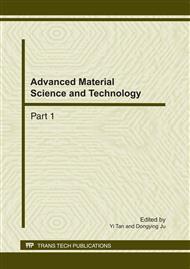p.689
p.693
p.697
p.701
p.705
p.709
p.715
p.719
p.723
Flexural Behavior of Steel Fiber Reinforced Self-Stressing Concrete in Continuous Systems
Abstract:
Steel Fiber Reinforced Self-stressing Concrete (SFRSSC for short) is a new type of high performance cementitious composite with self-expansive performance and high tensile resistance. It can be used as a joint material in the new bridge construction or the old bridge rehabilitation. Because when SFRSSC is restrained by steel bars and other terminal conditions, it can create chemical pre-stressing force to enhance the cracking moments of the continuous beams. For purpose of utilizing the properties of SFRSSC, the primary goal of this research is to apply SFRSSC as a joint material to build continuous bridges. Firstly, the model experiments of 8 continuous Tbeams with SFRSSC layers are carried out. Secondly, based on the model experiments, flexural performance of the beams reinforced by SFRSSC layers is investigated. Owing to enhancement of steel fibers and self-stress induced by steel bars, the layers greatly improve the first-crack strength and stiffness of the continuous T-beams. The test results obviously indicate that the composite SFRSSC-RC continuous T-beams enhance the crack moment 51.4%~121% more than conventional concrete continuous beams. Furthermore, SFRSSC can help cancel out the relative deformation and stress due to new concrete shrinkage between new and existing concrete during the process transforming simply supported beams into continuous beams. It is concluded that flexural performance of continuous T-beams strengthened by SFRSSC is more greatly improved than that strengthened by conventional concrete.
Info:
Periodical:
Pages:
705-708
Citation:
Online since:
February 2011
Authors:
Price:
Сopyright:
© 2011 Trans Tech Publications Ltd. All Rights Reserved
Share:
Citation:


